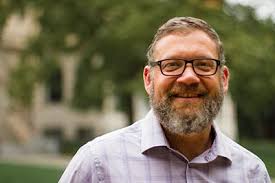Easing social distancing measures put in place to slow the spread of the coronavirus disease 2019 (COVID-19) – for each household to have contact with one or two others – would reconnect most households in a community and allow the virus to keep spreading, according to a website developed by researchers from the University of Washington.
The website, titled “Can’t I please just visit one friend?,” was launched April 3 by network epidemiologists Steven Goodreau, a UW professor of anthropology and adjunct professor of epidemiology at the School of Public Health, and Martina Morris, a UW professor emerita of sociology and statistics.

“There have been lots of discussions and articles about using social distancing to do things like ‘flatten the curve,’” Goodreau said. “We wanted to illustrate these principles at a community level, to help people visualize how even seemingly simple connections aren’t so simple.”
The researchers base their visualizations on a hypothetical community of 200 households to show the effectiveness of social distancing. By adjusting the social connections in this model, they can illustrate how contact with others can influence the spread of a virus like COVID-19.
Without social distancing, and assuming each household has 15 connections to other households, the visualizations show that every household in the community is directly or indirectly connected to each other. In another scenario where most households are isolated from each other, but approximately 10% of them include a person with an essential job, the visualization shows that the largest connection cluster this would create is 26% of the households. For the vast majority of households, there is no social connection to potentially expose them to the COVID-19 virus.
However, if each household visited just one friend in the said community, 71% of the households would be reconnected into one large cluster. And just one COVID-19 case in this scenario could potentially spread to almost three-quarters of the families in the community, according to the simulations shown on the website. Even more, if each household established two social connections on average, that would reconnect 90% of the households and each connection in this case would provide an opportunity for the virus to spread.
“With COVID-19, many types of connections can transmit the virus,” Morris said. “What we show is that you don’t need superspreaders to create network connectivity for transmission; visiting just one friend is equally effective for connecting a community into one large cluster.”
By forgoing that visit with just one friend, people can help their neighbors both nearby and across town, and they will be helped in return, Morris added.
